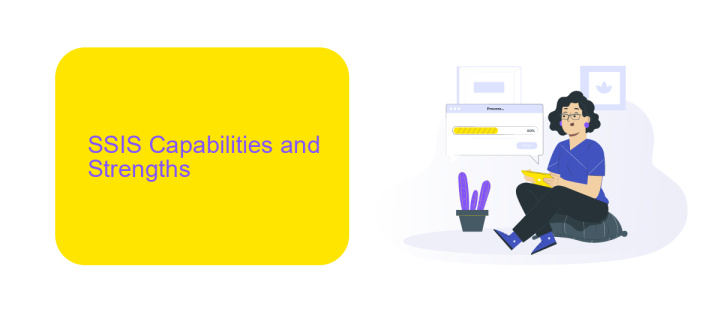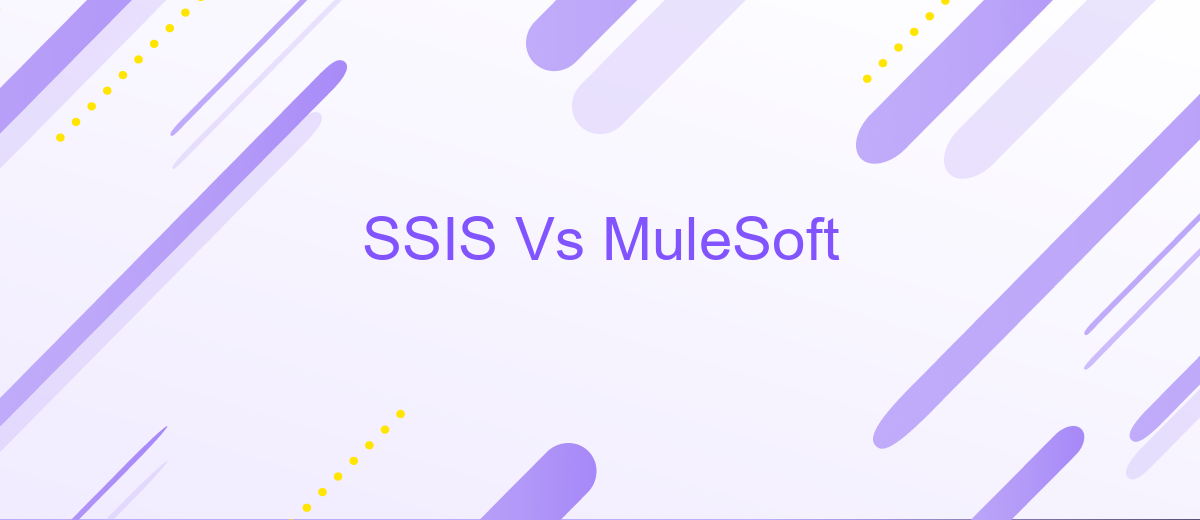SSIS Vs MuleSoft
In the rapidly evolving landscape of data integration and management, choosing the right platform is crucial for business success. This article delves into a comparative analysis of SSIS (SQL Server Integration Services) and MuleSoft, two leading integration tools. By examining their features, strengths, and use cases, we aim to provide valuable insights to help organizations make informed decisions.
Background
SSIS (SQL Server Integration Services) and MuleSoft are two prominent tools used for data integration and workflow automation. SSIS, developed by Microsoft, is a platform for data integration and workflow applications, primarily used within SQL Server environments. MuleSoft, on the other hand, offers a versatile integration platform that connects various applications, data sources, and APIs, making it a robust choice for diverse IT ecosystems.
- SSIS: Ideal for ETL processes within SQL Server environments
- MuleSoft: Comprehensive API-led connectivity for diverse systems
- ApiX-Drive: Simplifies integration setup for various platforms
Choosing between SSIS and MuleSoft depends on the specific needs of an organization. SSIS is well-suited for environments heavily reliant on Microsoft technologies, offering seamless integration and performance. MuleSoft, with its API-led approach, provides extensive connectivity options across different systems and applications. Additionally, services like ApiX-Drive can further streamline the integration process, making it easier to connect various platforms without extensive coding.
SSIS Capabilities and Strengths

SQL Server Integration Services (SSIS) is a powerful data integration tool that enables organizations to efficiently manage data migration, transformation, and ETL (Extract, Transform, Load) processes. One of SSIS's key strengths is its ability to handle large volumes of data from various sources, including databases, flat files, and cloud services. With its rich set of built-in components and tasks, SSIS allows users to create complex data workflows with minimal coding, making it accessible to both developers and data analysts.
Another notable capability of SSIS is its robust error handling and logging features, which ensure data integrity and facilitate troubleshooting. SSIS also offers seamless integration with other Microsoft products, such as SQL Server, Azure, and Power BI, enhancing its versatility in different data environments. While SSIS is highly effective for on-premises data integration, tools like ApiX-Drive can complement SSIS by providing easy-to-use, cloud-based integration services, enabling businesses to automate workflows and integrate various online applications without extensive technical knowledge. This combination of SSIS and ApiX-Drive can significantly streamline data processes and improve operational efficiency.
MuleSoft Capabilities and Strengths

MuleSoft is a powerful integration platform that offers a comprehensive suite of tools for connecting applications, data, and devices. It excels in providing seamless connectivity across various systems, enabling businesses to streamline their operations and enhance productivity.
- API-led Connectivity: MuleSoft's approach to integration focuses on APIs, which allows for modular and reusable components, making the development process more efficient and scalable.
- Comprehensive Data Integration: MuleSoft supports a wide range of data formats and protocols, facilitating smooth data exchange between disparate systems.
- Cloud and On-Premise Integration: The platform provides robust solutions for integrating both cloud-based and on-premise applications, ensuring flexibility and adaptability.
- Advanced Security Features: MuleSoft ensures data security with built-in features like encryption, tokenization, and secure access controls.
- Real-time Analytics: The platform offers real-time monitoring and analytics, helping businesses make informed decisions based on up-to-date information.
Additionally, tools like ApiX-Drive complement MuleSoft by providing user-friendly interfaces for setting up integrations without extensive coding knowledge. This synergy allows businesses to leverage the strengths of both platforms, resulting in more efficient and effective integration solutions.
Comparison of Key Features

When comparing SSIS and MuleSoft, it's essential to understand their key features and how they cater to different integration needs. SSIS, or SQL Server Integration Services, is a data integration and workflow application used primarily for data warehousing. MuleSoft, on the other hand, is an integration platform for connecting applications, data, and devices in the cloud and on-premises.
SSIS is known for its strong ETL (Extract, Transform, Load) capabilities, making it a powerful tool for data migration and transformation tasks. MuleSoft excels in API management and offers a more comprehensive solution for connecting a wide range of applications and services. Both platforms have their strengths, but they serve different purposes in the integration landscape.
- Data Integration: SSIS is tailored for data warehousing and ETL processes, while MuleSoft focuses on API-led connectivity.
- Scalability: MuleSoft provides better scalability for cloud-based integrations, whereas SSIS is more suited for on-premises solutions.
- Ease of Use: SSIS has a user-friendly interface for ETL tasks, while MuleSoft offers a more extensive set of tools for API management.
- Flexibility: MuleSoft supports a wider range of integrations, including IoT and SaaS applications, compared to SSIS.
For organizations looking for a versatile and scalable integration solution, MuleSoft might be the better choice. However, for those focused on data warehousing and ETL processes, SSIS remains a robust option. Additionally, services like ApiX-Drive can further simplify integration tasks by providing user-friendly tools for automating data flows between various platforms.
Conclusion and Recommendation
In conclusion, both SSIS and MuleSoft offer robust solutions for data integration and management. SSIS is a powerful tool for those deeply embedded in the Microsoft ecosystem, offering seamless integration with other Microsoft products and a strong focus on ETL processes. However, it may require more technical expertise and is less flexible when it comes to integrating with non-Microsoft platforms.
On the other hand, MuleSoft excels in providing a versatile and scalable integration platform that supports a wide range of applications and services. Its user-friendly interface and comprehensive API management capabilities make it a strong contender for businesses looking for a more flexible solution. For those who seek a simplified way to manage integrations, services like ApiX-Drive can further streamline the process, offering an easy-to-use platform that connects various applications without extensive coding. Ultimately, the choice between SSIS and MuleSoft should be guided by your specific needs, existing infrastructure, and long-term integration strategy.
FAQ
What are the primary differences between SSIS and MuleSoft?
Can SSIS and MuleSoft be used together?
Which tool is better for cloud-based integrations?
Is there a need for specialized skills to use SSIS or MuleSoft?
Are there services available to help with automation and integration setup?
Apix-Drive is a simple and efficient system connector that will help you automate routine tasks and optimize business processes. You can save time and money, direct these resources to more important purposes. Test ApiX-Drive and make sure that this tool will relieve your employees and after 5 minutes of settings your business will start working faster.

